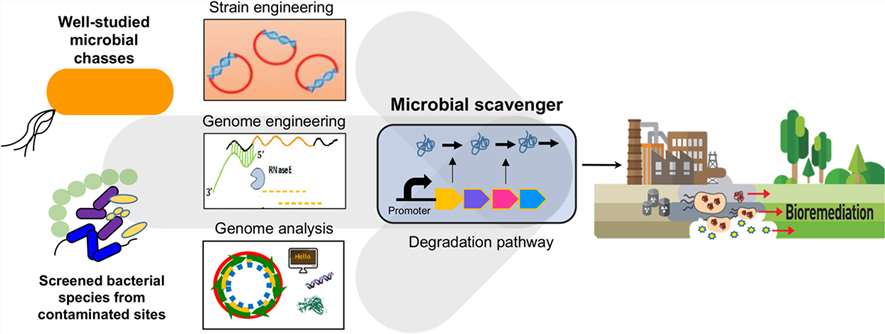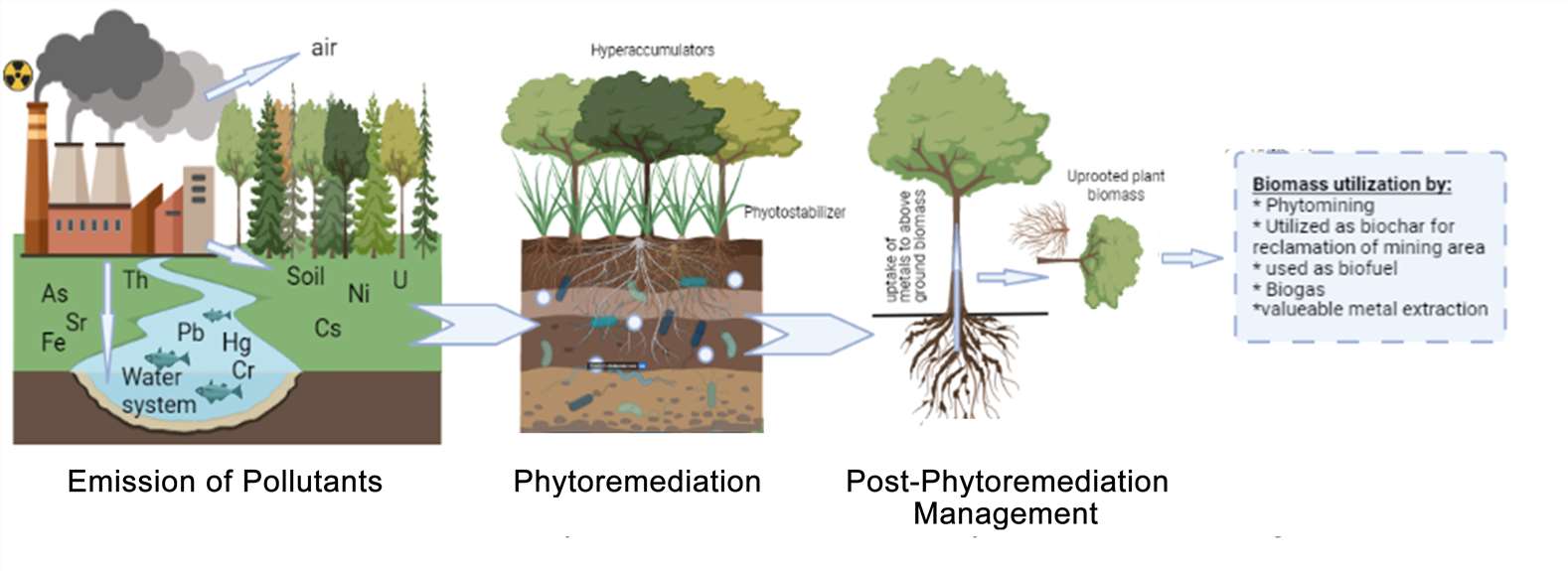Under the pressure from the population growth, overconsumption and other human activities, environment is losing its human scale. Accumulation of noxious xenobiotic compounds in soil, water and air is one of the most serious environmental problems. Due to these pollutants, crops are difficult to grow in the field, livestock can't be fed properly, what's more, humankind are facing many serious problems, such as food shortage, toxic living conditions, overdrawn resource and so on.

Technologies of remediation process through biological system have been developed rapidly in recent years. Compared with traditional physical and chemical treatment methods, they are more sustainable, eco-friendly, cost-efficient and developable. Pollutions including organic pollutions, pesticide pollution, heavy metals pollutions and others can be absorbed, restored or degraded by organisms including some microorganisms and plants.
Utilizing gene editing technologies to generate organisms with capacities related to environment conservation has been applied in some area. By introducing genes encoding proteins required for the degradation of pollutants, and genes that are able to monitor pollution levels, organisms can be grown in polluted conditions, and monitor the level of pollutants.
Organisms, including bacteria, cyanobacteria, microalgae, fungus and plants, have great potential to clean up pollutants from air, soil and water. In theory, bioremediation can be used to reduce most influences from industrial and agricultural productions. And it's relatively sustainable and cost-effective.
 Process of Bioremediation (Tran, et al. 2021)
Process of Bioremediation (Tran, et al. 2021)
With gene editing technology, cyanobacteria strains with tolerance of various toxic environments can be generated, including heavy metal, pesticides, crude oil, organochlorine, organophosphorus and many other toxic compounds. And cyanobacteria can be able to degrade organic pollutants like hydrocarbons, dyes, organometallic compounds, pesticides and herbicides.
Using living plants to clean up contaminated soil, water and air is called phytoremediation. It's considered as a potential technology to restore environment. Compared with other technologies, phytoremediation is relatively cost-effective and convenient.
By modifying plant genome or their chloroplast genome, they will have tolerance of heavy metals, pesticides, solvents, explosives, crude oil and its derivatives. And it's also an ideal method to recycle metal. Organisms can accumulate metal by chelation.
 Process of Phytoremediation (Manisha, et al. 2022)
Process of Phytoremediation (Manisha, et al. 2022)
Additionally, plant can be engineered to accumulate particular pollutant, and they can be employed as a biosensor of soil pollutants. With part of the branch, researchers can observe pollutant concentration.
With advanced and mature gene editing platform RecoNase™, Lifeasible offers services including gene knock-in and gene knock-out in cyanobacteria, chloroplast and yeast. Our experienced scientists have established efficient and high-precision gene editing toolkit, in which our customers can get satisfying results on time. Please feel free to contact us, get started with our professional services.
References